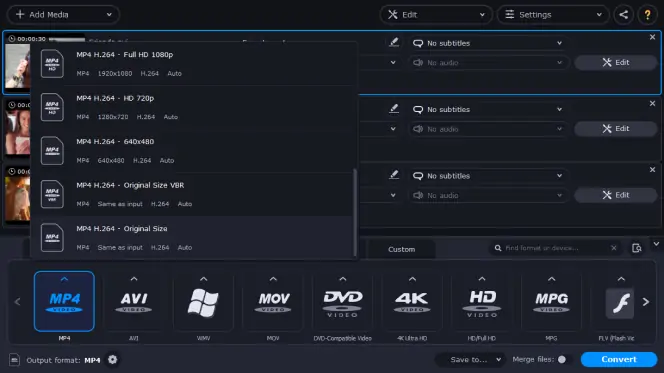Intel Mac mini Q&A - Updated November 5, 2009
VLC: http://files8.blogspot.com/2010/11/mkvtoolnix.html. More than a video player. Use a video player that does more than just ‘play'. Watch your video library in high-quality up to 4K, enjoy a variety of video formats such as AVI, DIVX, MKV and MP4, and take advantage of features like smooth FF/RW and chapter points. Download Mac Software For H.264 Dvr - real advice. AVI player for Mac can act as a free 4K/8K/HD video player. It enables you to play 4K/8K videos and HD videos, including 1080p/1080i/720p videos smoothly on wide screen. Most of the 4K/HD video formats are highly supported, such as MP4, H.264/MPEG-4 AVC, H.265/HEVC, TS, MKV, AVI, MOV, FLV and WebM. Play Blu-ray/DVD with the Best User Experience. Devices and Mac OS X version. VLC media player requires Mac OS X 10.7.5 or later. It runs on any Mac with a 64-bit Intel processor or an Apple Silicon chip. Previous devices are supported by older releases. Note that the first generation of Intel-based Macs equipped with Core Solo or Core Duo processors is no longer supported.
To be notified of new Q&As, sign up for EveryMac.com's bimonthly email list.
If you find this page useful, please Bookmark & Share it. Thank you.
Imac 2006 yosemite. Is the Intel Mac mini capable of H.264 HD playback?
For readers who may not be familiar with the term 'H.264 High Definition', the Apple Quicktime website (no longer online) noted that:
H.264 uses the latest innovations in video compression technology to provide incredible video quality from the smallest amount of video data. This means you see crisp, clear video in much smaller files, saving you bandwidth and storage costs over previous generations of video codecs. H.264 delivers the same quality as MPEG-2 at a third to half the data rate and up to four times the frame size of MPEG-4 Part 2 at the same data rate.
H.264 achieves the best-ever compression efficiency for a broad range of applications, such as broadcast, DVD, video conferencing, video-on-demand, streaming and multimedia messaging. . . Whether you need high-quality video for your mobile phone, iChat, Internet, broadcast or satellite delivery, H.264 provides exceptional performance at impressively low data rates.
Apple states that the minimum supported MacOS X system for H.264 HD playback at '1280x720 (720p) video at 24-30 frames per second' is a Power Macintosh G5/1.8 or an Intel-based Mac with a 1.83 GHz Intel Core Duo or faster processor, at least 256 MB of RAM, and at least a 64 MB video card.
For '1920x1080 (1080p) video at 24 frames per second' H.264 HD playback, Apple recommends a minimum MacOS X system of a Power Macintosh G5/2.0 DP or an Intel-based Mac with a 2.0 GHz Intel Core Duo or faster processor, at least 512 MB of RAM, and at least a 128 MB video card.
Intel-based Mac mini models shipped with at least 512 MB of RAM, and have at least an 'Intel GMA950 graphics processor with 64 MB of DDR2 SDRAM shared with main memory' or better.
This indicates that the Mac mini 'Core Duo' 1.83, with a 1.83 GHz Core Duo processor, officially supports 1280x720 (720p) video, but not 1920x1080 (1080p). On the other hand, the Mac mini 'Core Solo' 1.5 and Mac mini 'Core Duo' 1.66, with 1.5 GHz Core Solo and 1.66 GHz Core Duo processors, respectively, officially do not support H.264 HD playback at all.
However, some mentioned in ArsTechnicaforum postings that Apple's stated requirements may be a bit pessimistic, and they have achieved acceptable H.264 HD playback on hardware that is slower than that officially supported. Chromebook os download. Based on these third party reports, on March 3, 2006, EveryMac.com noted that it seemed likely that the Mac mini 'Core Duo' 1.66 system unofficially is able to support H.264 HD playback of at least 1280x720 (720p) at 24 fps, but doubtful that the Mac mini 'Core Solo' 1.5 system is able to support H.264 HD playback at the same resolution.
On March 9, 2006, MacWorld posted a review of the Intel-based Mac mini models that showed the Mac mini 'Core Duo' 1.66 was able to support better than 1280x720 (720p) playback, but was still not capable of supporting 1920x1080 (1080p). The author reported that 'in our test of an HD movie trailer for IMAX's Deep Sea 3D (H.264 encoding at 1,440 by 1,080 pixels), the Core Duo 1.66 played the video back smoothly. The Core Solo model, however, dropped frames, leading to distracting, stuttering video--even after we upgraded it to 1 GB of RAM.' Please note that '1440x1080' is substantially smaller than 1920x1080 (1080p), but still larger than 1280x720 (720p).
The 'Mid-2007' Mac mini 'Core 2 Duo' models -- the Mac mini 'Core 2 Duo' 1.83 and the 'Core 2 Duo' 2.0 -- more than surpass Apple's minimum requirements for 1280x720 (720p) -- but due to the integrated graphics with 64 MB of 'shared' video memory -- still do not not formally support 1920x1080 (1080p).
The 'Early 2009' Mac mini 'Core 2 Duo' -- the Mac mini 'Core 2 Duo' 2.0 (Early 2009/NVIDIA) -- with a 2.0 GHz 'Core 2 Duo' processor and NVIDIA GeForce 9400M graphics with 128 MB or 256 MB of 'shared' video memory more than meets the requirements for both 720p and 1080p. Likewise, the 'Late 2009' Mac mini models -- the Mac mini 'Core 2 Duo' 2.26, 'Core 2 Duo' 2.53, and 'Core 2 Duo' 2.53 (Server) -- are fully capable of supporting 720p and 1080p as well.
Permalink | E-mail a Friend | Bookmark & Share | Report an Error/Typo
Suggest a New Q&A | Sign Up for Bimonthly Site Update Notices
<< Intel Mac mini Q&A (Main)
EveryMac.com is provided 'as is' without warranty of any kind whatsoever. EveryMac.com, and the author thereof, shall not be held responsible or liable, under any circumstances, for any damages resulting from the use or inability to use the information within. For complete disclaimer and copyright information please read and understand the Terms of Use and the Privacy Policy before using EveryMac.com. Use of any content or images without expressed permission is not allowed, although links to any page are welcomed and appreciated.
A H.264 file is a video file encoded via the H.264 compression method and provides high quality videos in relatively lower bitrates. It is by far the most commonly used format for the recording, compression, and distribution of CCTV content. Almost all of the CCTV systems make use of H.264 codec. In this article we will show how to play H.264 files from your CCTV camera or DVR/NVR using the VLC player and how to convert H.264 video files to MP4 format.

How to play H.264 files on VLC player
264 Player Mac
If you have the CCTV camera videos in H.264 video format, how can you play these H.264 videos in VLC player on Windows or Mac computer? Here's the step-by-step guide on how to play H.264 videos on VLC player.
Step 1. Download the latest VLC version here and have it installed on your computer.

How to play H.264 files on VLC player
264 Player Mac
If you have the CCTV camera videos in H.264 video format, how can you play these H.264 videos in VLC player on Windows or Mac computer? Here's the step-by-step guide on how to play H.264 videos on VLC player.
Step 1. Download the latest VLC version here and have it installed on your computer.
H 264 Player Mac
Step 2. Launch VLC media player. Go to Tools and then click Preferences.
Step 3. Tick All to show all the Settings.
Step 4. Select 'H264 video demuxer' from the Demux module. Next click Save.
Step 5. That's all. Now you can open up and play/view the H.264 files in VLC media player.
Troubleshooting tips if VLC is not playing H.264 files
If you're still having problems and you can't play H.264 videos on VLC player, try the following troubleshooting tips that may help to fix the issues: Download google docs for linux.
- Update your VLC media player to the latest version and make sure to update VLC codecs.
- Force H.264 demuxer in VLC preferences. Go to Tools > Preferences > Show settings, click All > Input/Codecs Demuxers: Demux module [H264 video demuxer].
- Convert H.264 files to the MP4 format (read the instructions on the next section).
- Sometimes renaming the file extension to .mpg does the trick. Try it and see if it plays on VLC.
How to convert H.264 files to MP4
Another way to play H.264 videos on VLC is to convert H.264 files to MP4 format first, and then play your CCTV videos on the VLC media player. However, nowadays most of the CCTV manufacturers provide built-in converters, so when you export the videos they're already on MP4 format.
Here are the steps to convert H.264 files to MP4:
Step 1. Use a free video converter such as VSDC Free Video Converter or Subler. Download it and install it on your computer.
Step 2. Click 'Add files' and add the H.264 files that you need to convert.
Step 3. Choose 'MP4' as the video format you want to convert to.
Step 4. Click Convert, wait until it's done and then Save.
After you're done converting the H.264 files to MP4 format, you will be able to play and view the videos in the VLC player.

